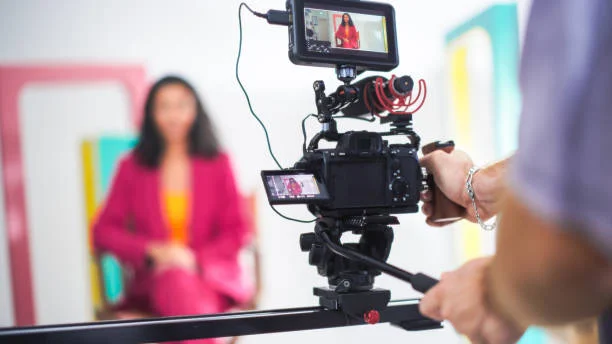In today’s fast-paced corporate world, a polished video can convey a brand’s identity, mission, and values more powerfully than text or static imagery. But what goes on behind the camera is often far more complex than it appears. This article peels back the curtain on corporate video production to reveal the processes, challenges, and creative decisions that transform an idea into a compelling corporate video.
1. Ideation and Strategy: Laying the Foundation
Before a single shot is captured, the team must develop the strategy behind the video. What message do you want to deliver? Who is the target audience—employees, clients, investors, or the public? What tone and style will best reflect your brand? These questions demand research, brainstorming sessions, and often multiple revisions.
At this stage, a video production partner or in-house team may prepare a creative brief. The brief defines objectives, constraints, key messages, and success metrics. It becomes the roadmap for the entire project. Some agencies even conduct workshops or interviews with stakeholders to unearth unique stories or differentiators.
Insightful, practical, and inspiring—check out this related post instantly.
2. Pre-Production: Planning Every Detail
In the pre-production phase, the planning matures into concrete assets and logistics. This is often the longest and most meticulous phase.
Key pre-production tasks include:
- Scriptwriting and Storyboarding
A written script defines dialogue, narration, and visual cues. Then storyboarding turns the script into a rough “comic-strip” of scenes, shot by shot. - Talent and Casting
For videos requiring actors, voiceovers, or interviewees, casting becomes crucial. Some corporate videos use internal employees, while others hire professionals to ensure on-screen presence and clarity. - Location Scouting and Permits
Choosing locations that match the aesthetic and logistical needs is vital. The team must check for lighting, sound, permissions, power supply, and access. - Equipment and Gear
The type of cameras, lenses, lighting rigs, audio recorders, and stabilizing gear are all planned in advance. Backup equipment is also considered to avoid hiccups during the shoot. - Scheduling and Call Sheets
A detailed shooting schedule is created, often broken down by hour and location. Call sheets (who reports where and when) help keep the entire crew in sync. - Contingency Planning
Rain, power failures, delays, and talent no-shows are ever-present risks. A good production plan includes backup options and buffer time.
3. Production: The Shoot Day(s)
When the day arrives, all planning is tested in action. This is where coordination, technical skill, and adaptability truly matter.
- Crew Roles and Coordination
On set, you typically have a director, director of photography (DP), camera operators, gaffer (lighting), grip (rigging), audio engineers, production assistants, and possibly a producer. Each has specific roles and must coordinate closely. - Lighting and Framing
Setting lighting is not just about brightness—it’s about mood, depth, shadows, and visual consistency. The DP must choose angles, lenses, and camera movement to support the narrative. - Audio Capture
Clear, crisp audio is non-negotiable. On corporate shoots, noisy backgrounds, echo, or interference can derail the message. Boom mics, lavalier mics, sound blankets, or portable recorders help mitigate issues. - Direction and Delivery
The director guides talent on pacing, expression, and delivery, ensuring that the performances align with the brand’s tone. Multiple takes and adjustments are often required. - B-roll and Supporting Footage
To give the video richer texture, crews shoot supplementary “B-roll” — cutaway visuals, close-ups, ambient shots, and behind-the-scenes footage that help transitions and storytelling. Even with perfect planning, surprises are common—weather, technical hiccups, or last-minute changes. The mark of a seasoned production team is how gracefully they adapt.
4. Post-Production: Crafting the Final Narrative
Once filming wraps, the raw footage arrives in post-production. This is where the narrative truly comes together.
- Ingesting and Organizing
All recorded footage is imported, backed up, and organized into bins (e.g. by scene, camera, audio). Editors review the material and select “takes” for use. - Rough Cut and Feedback Loops
The editor assembles a rough version that maps the story in sequence, often without polish. Stakeholders review and provide feedback. Many productions run through multiple revision cycles. - Fine Cut and Polishing
Once stakeholders approve structure and flow, the fine cut begins. Editors refine transitions, pacing, graphics, and visual cohesion. - Color Grading and Correction
Colorists adjust color balance, apply looks, and ensure consistency across shots. This step gives the video a professional, unified look. - Sound Design and Mixing
Sound engineers layer voiceovers, ambient sound, effects, and music tracks. They balance levels, remove noise, and apply audio effects or compression to make the mix clean. - Motion Graphics, Titles, and VFX
Logos, lower thirds, animations, transitions, or simple visual effects are added to make the video more engaging and informative. - Mastering and Deliverables
The video is exported into various formats (HD, 4K, social versions) and aspect ratios (16:9, square, vertical) depending on the distribution channels. Quality checks ensure there are no glitches, audio sync issues, or rendering errors.
5. Distribution, Promotion & Analytics
A professional video is only as effective as the strategy behind its distribution. A great piece of video content must reach the right audience in the right format.
- Platform Optimization
Videos may be published on corporate websites, YouTube, LinkedIn, internal portals, or social media. Each platform has its own specifications—bitrate, duration, aspect ratio. - SEO and Metadata
Titles, descriptions, tags, transcripts, and thumbnails are optimized for search engine visibility. - Promotional Campaigns
The video may be integrated into email campaigns, ad campaigns, press releases, or events. - Tracking Metrics
Analytics (views, engagement, drop-off rates, click-throughs) help assess performance and guide improvements for future videos.
Why It’s More Than Just Pressing “Record”
What makes a truly professional corporate video is not just high-end cameras or editing software. It’s the synthesis of creative vision, storytelling, technical execution, and strategic thinking. Each stage—from strategic ideation to final distribution—requires careful coordination among multiple specialists.
For organizations that seek excellence, working with a seasoned team is often the difference between a forgettable clip and a powerful piece of brand storytelling. To see how a creative agency brings these complex pieces together, check out Gorilla Creative at the exemplify what professional corporate video production looks like in practice.
Expand your vision—this related post reveals insights most people overlook today.






